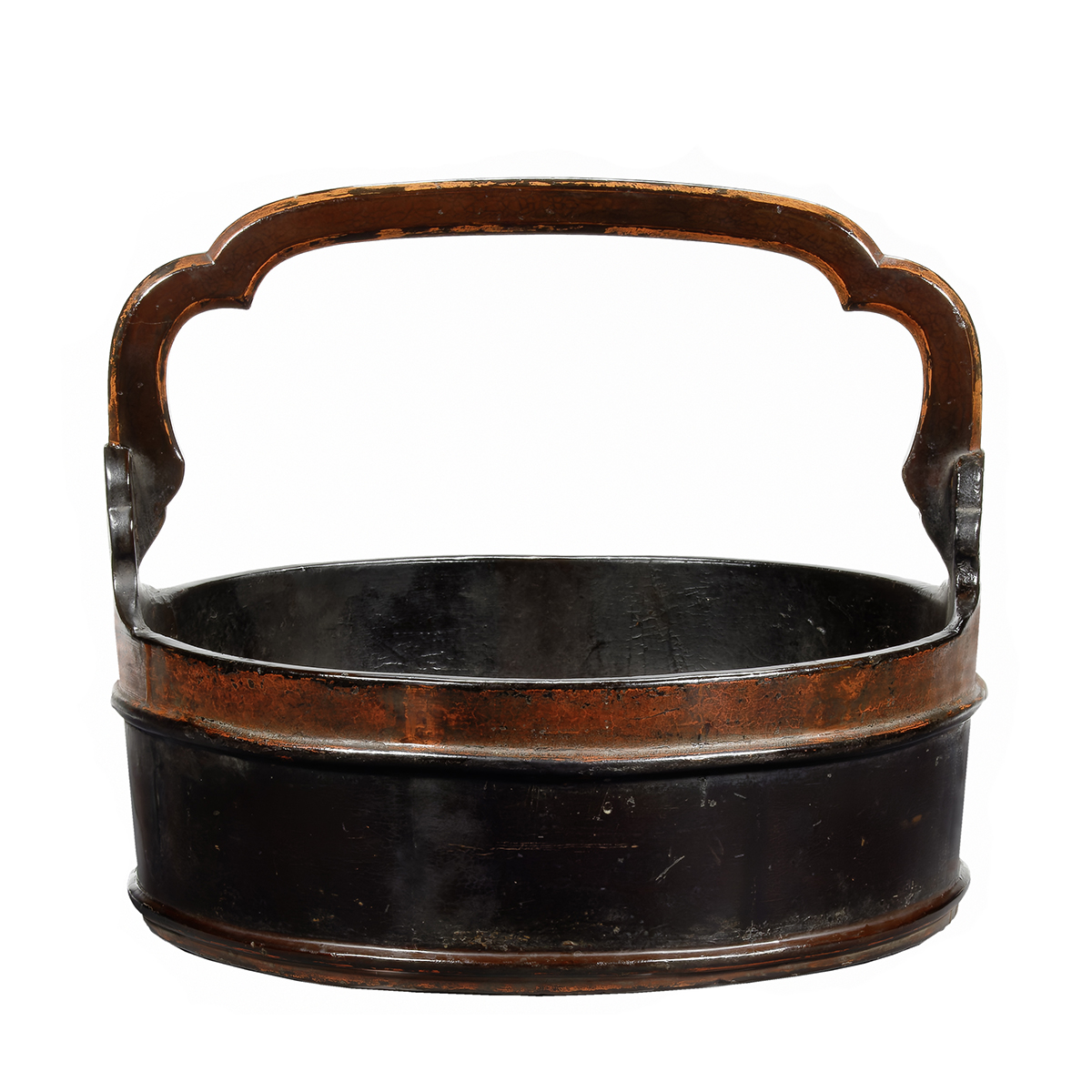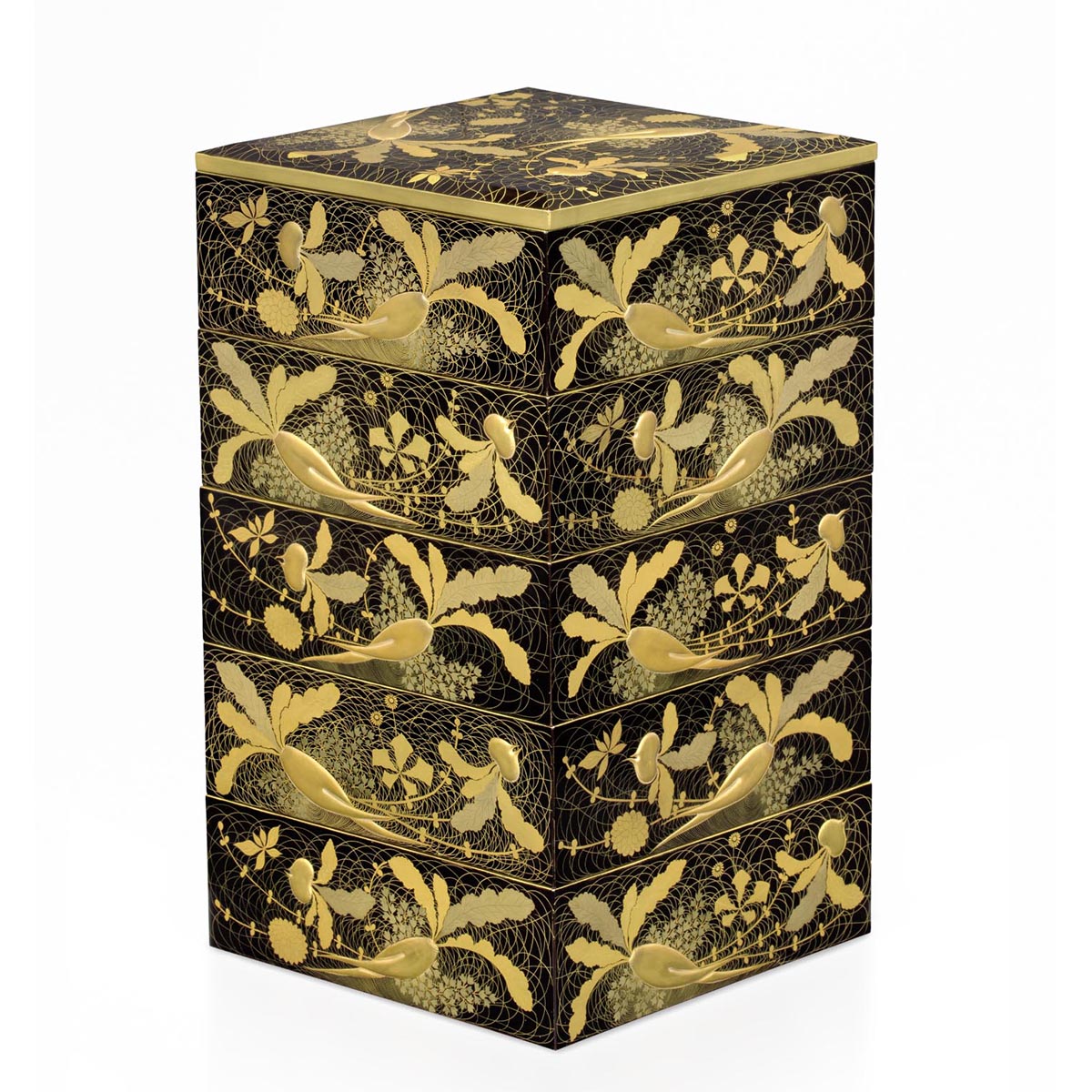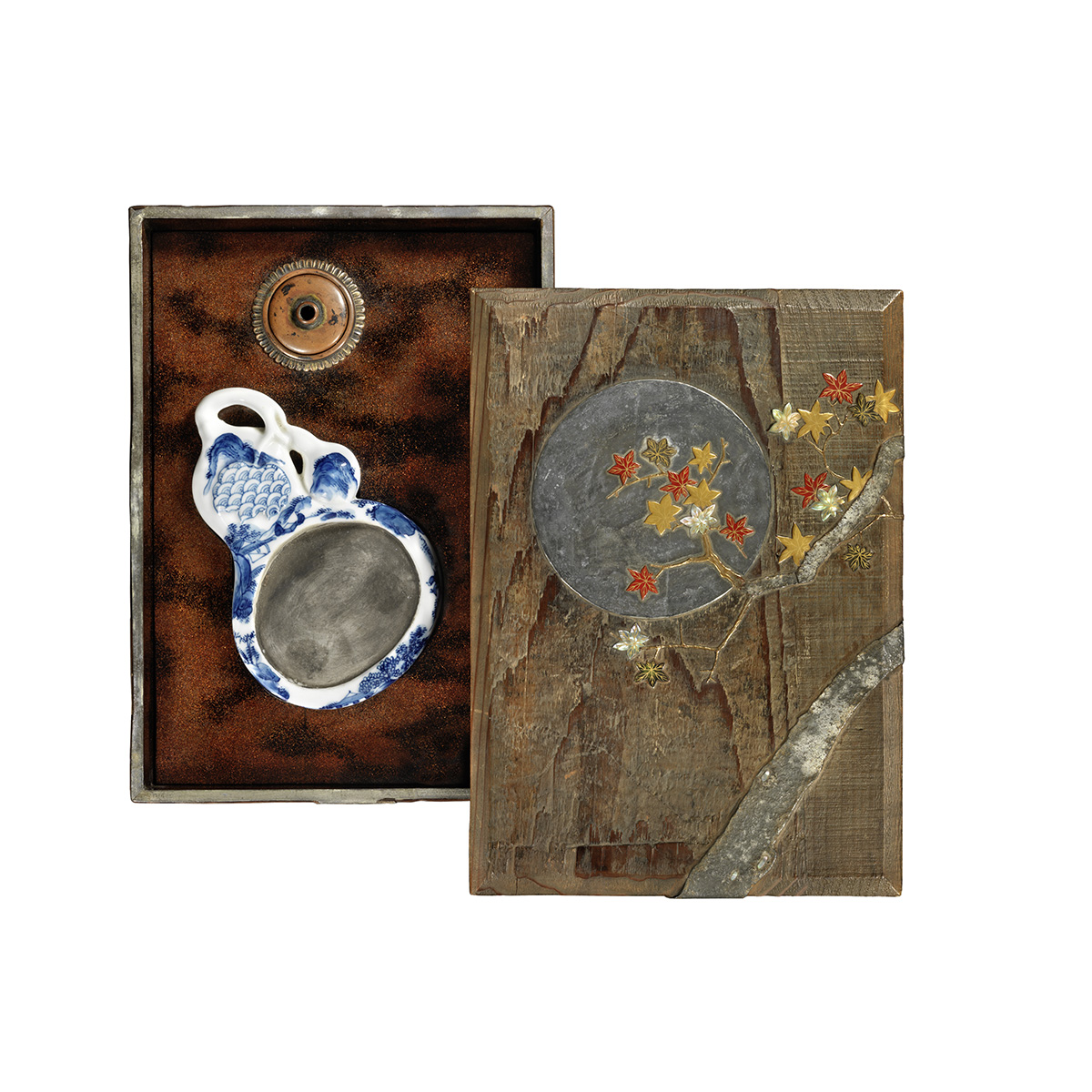Negoro Oke
Lacquer
- Sold
-
Material
Lacquered wood
-
Size
28 (h) x 33 x 33 cm
-
Period
Muromachi period, Ōei era (1394-1428)
-
Box
Awasebako titled “Nagoro Saioke”
Description
Negoro Oke Bucket
A large open shallow bucket shape with elaborate handle called an Oke (Pronounced okay) covered in black and red lacquer in the style known as Negoro dating from the Muromachi period (14th-15th century).
A nearly identical Saioke dated 1307 with red lacquered interior is held by the ministry of cultural affairs (Bunkacho) which states it was used for carrying vegetables in a Buddhist Temple.
It is 33 cm (13 inches) diameter, 28 cm (11 inches) tall. Of course, there are a number of old repairs, as one might imagine for unprotected lacquered wood in use for 5 centuries. It comes in an old slightly worm eaten kiri-wood box titled Negoro Saioke.
According to the National Gallery of Victoria: Negoro refers to simple and elegant red lacquer objects that were produced during Japan’s medieval period, between the twelfth and seventeenth centuries. Embodying the ancient sense of Japanese beauty, the minimalistic forms of Negoro lacquer ware were primarily made to be functional objects and are void of elaborate decoration.
The supple shapes and naturally worn patina of red and black lacquered layers give Negoro an ambience of antiquity and elegance which has made them treasured objects throughout the ages. Since the early twentieth century Negoro wares have become highly appreciated by connoisseurs as objects of outstanding design that pursue a certain utilitarian beauty.
Negoro lacquer derived its name from the Buddhist temple of Negoro-ji, located in the mountains of present-day Wakayama Prefecture, just south of Osaka. Established in 1243 as a temple of esoteric Buddhist practice, Negoro-ji thrived during the Kamakura, Muromachi and Azuchi-Momoyama periods. In period depictions of monastery life and aristocratic villas Negoro utensils are clearly shown as favored and cherished objects, alluding to demand for their production in large numbers.
Square and circular trays, bowls of various sizes and large spouted ewers were used at daily meals. Lobed cup stands, offering trays and sake bottles with foliate lids featured in temple rituals and clearly display lotus flower–inspired motifs common to Buddhist art. Stem tables were frequently used as offering stands and placed in altars of Buddhist temples and Shinto shrines. Circular wash basins with legs were used in monastery ceremonies to catch water poured over the hands of monks in an act of purification. Large hot water pots or spouted ewers were often used as practical kitchen and serving utensils, and are still used to this day in Zen monastery dining halls.
The true essence of Negoro is found in its antiquity and the generations of affectionate use that imbues these objects with the esoteric Japanese spirit wabi (the aesthetic of beauty found in imperfection), and sabi (an affection for the old and faded). With regular use the wearing and reduction of the outer red coating gradually reveals the black lacquer beneath, creating an ever-changing beauty that can only result from continual use and the passage of time.
Cracks, wear, damage, splits, texturing and irregularities all enhance the harmonious sophistication of a Negoro object’s surface. This natural evolution of beauty, similar to the maturing of the human spirit with age, epitomizes the Japanese spirit and stems from the belief that the respectful use of an object for its proper function enhances its appearance and status.


